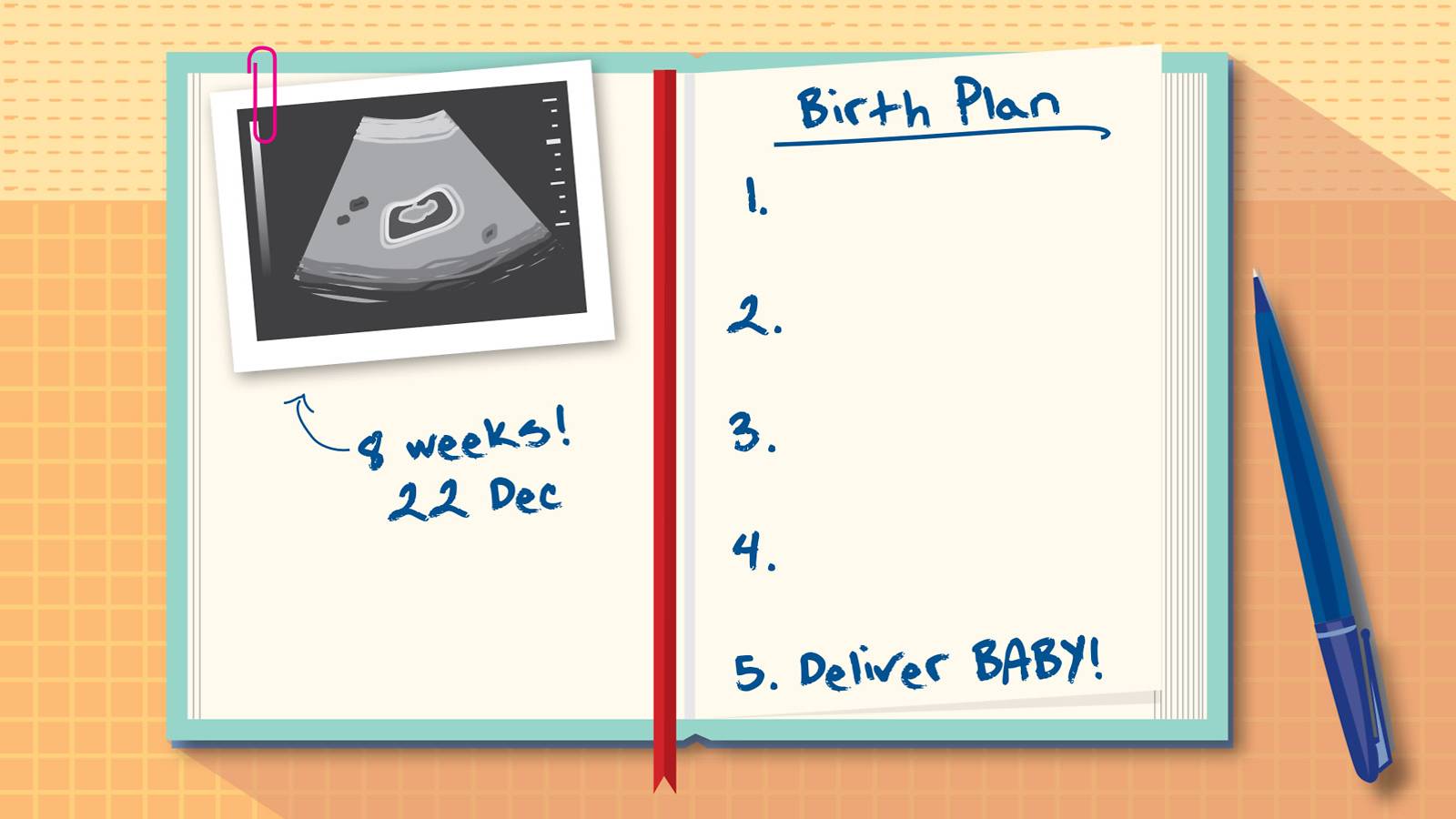Five tips for what you need in your birth plan.

1) When to write it
For most of your nine months, you’ll be more focused on your growing bump than whether to laminate “acceptable intervention choices”. But it’s worth giving it some thought — by the time you’re four weeks from your due date, it’s time to put pen to paper.
Do research on what options are available to you when you’re in labour — so, read pregnancy books, do online checks, attend antenatal classes, take a tour of your hospital and talk to your gynae.
2) Who should be with you
“Whether it’s your husband, best friend or mum, your birth partner is an essential part of any mum-to-be’s team,” says doula Nicole Croft, author of The Good Birth Companion. “If you’re all on the same page about what’s important to you during the birth, they’ll find it much easier to support you.”
A plan will also help your birth partner as you’d have laid out your wishes, rather than have them make decisions for you — which is quite a responsibility. Should things go off plan, it can make your birth partner feel guilty even if it’s not their fault.
If you use a doula, it’s important to write her details down in your birth plan, so that your doctor knows when to include her in the birthing process.
“Most maternity wards limit the number of people you can have with you during labour, otherwise, things can get a bit crowded,” explains midwife Denise Tiran, from expectancy.co.uk. Choose one or two birth partners — having two means they can take turns, which allows one of them to get some rest.
3) What to include
Keep your birth plan short — no more than one side of an A4-sized sheet of paper. “Only put in the things that are really important to you,” Croft advises. Even if there are things you want, you might need to change your mind during labour, or the doctors may have to do things in a different way to keep you and your baby safe.
“I think everyone should make the first line of their birth plan, ‘I really want a healthy baby that is delivered safely’,” says Koh Swee Ling, 33, mum to Stacie, 5 months. “Having that at the top of my list helped me put all my other hopes for the birth into perspective.”
4) Pain relief and positions
The truth is that, until you’re actually in labour, it’s hard to make that final call on the pain relief you want, let alone what position you might find soothing during pushing. So, start looking for different ideas and discuss them with your doctor. If you don’t like the sound of a particular form of pain relief — such as pethidine — write that down.
If you hope to use a birthing pool, aromatherapy or listen to a hypnobirthing CD, put that in, too.
Keen to keep moving around, rather than ending up flat on your back? Then make your wishes known.
5) After your baby’s born
Beyond your baby’s arrival, you’ll need to make decisions on how your placenta is delivered — known as the third stage of labour — so include your preferences in the plan. It’s common for hospitals to use drugs to speed this up (a “managed” third stage) and, in some cases, it’s best for the mum as it reduces the chances of heavy bleeding.
But, if you’d like to have a natural third stage, make it clear in your plan. And don’t forget to mention if you want to hold your baby immediately or have her cleaned up first.
Illustration: Rachel Lim
Will my waters break and flood the floor?
